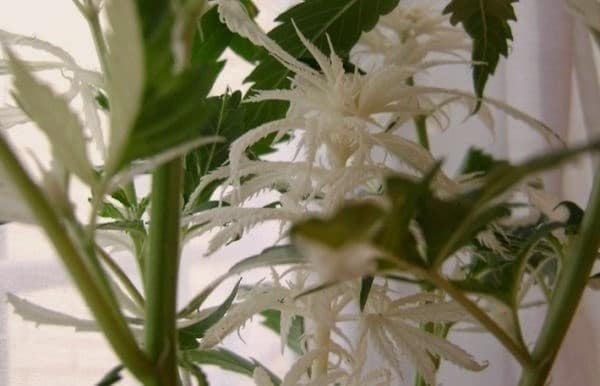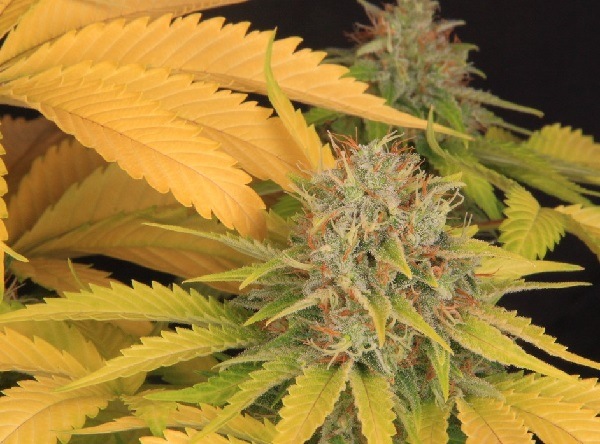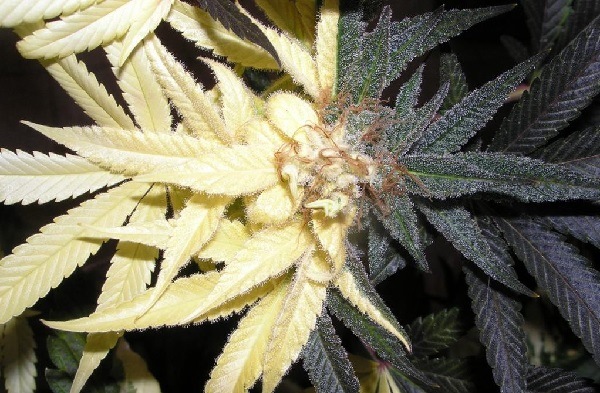

In constant struggle for the regulation of cannabis, mainly in the medicinal field.
10-05-2019 11:00:06 - Updated: 10 May, 2019
It has long been believed that white marijuana was a product of fiction such as the unicorn or the Snowman. An extravagance that could not be more than a product of photographic montages.
The lack of light caused the plants to turn white, and so the New York White regia was born, to which some growers would go to give love in the sewers to harvest their white and superpowerful buds.
In this post we are going to try to dismantle some myths that run on the internet and we are going to look at the subject from the most scientific prism.
? Introduction
White marijuana is the result of genetic mutation, just as it happens in nature, this phenomenon is known as albinism.
Albinism is not an exclusive mutation of animals, it can also occur in plants. In both cases the phenomenon is characterized by the absence of pigments, melanin in animals and chlorophyll in plants.

? White cannabis plants
The white colour in marijuana occurs from time to time, as a result of a double recessive gene that determines the absence of chlorophyll or a bad development of the genes that order the production of pigment.
The first one gives like result an absolutely white plant, although it is not the most usual thing; and in the second case what mutates is the bud or a part of the plant. Another possible explanation is that the deficient pigmentation is due to the non-conformity between the nuclear and chloroplastic genomes.
Chlorophyll is the pigment that gives colour to plants. Its purpose, more than aesthetic, is vital since it is necessary for the photosynthesis process. The chlorophyll of cannabis leaves is responsible for absorbing sunlight, triggering the chemical reaction that produces glucose feeding the plant from carbon dioxide (CO₂) and raw sap obtained from mineral salts and subsoil water.

? Effects of white cannabis
If it is true that the white marijuana gives us with a beautiful flower, chlorophyll low levels deliver a product of lower quality compared to conventional varieties.
The albino marijuana cannot create the necessary energy to provoke the chemical reactions that cannabinoids produce, present in low concentrations in this type of marijuana, destiny almost has made them a Chinese vase.
In addition to genetic factors, albinism can have environmental triggers such as light, temperature and substrate cultivation.
Cannabis plants may have white tones due to light exposure. These varieties are not albino or white, but green plants discolored during growth by an intentional approach or by accident to a light source, such as a high-intensity lamp focus that affects the pigment.
This causes a whitening, which mainly affects the overexposed areas of the plant. This alteration is usually manifested in plants cultivated indoors, but it is very rare that it occurs outdoors.
Discoloration due to light overexposure causes stress in plants, although it usually affects only those parts of the plant that receive light excess. Depigmentation progress can be avoided with the use of fertilizers and light adjustments.
Genetic factors produce a small amount of chlorophyll when the albino plant germinates. On the other hand, in chlorosis, a disease that can disturb our shoots, bleaching is caused by a shortage of nutrients in the subsoil.
Marijuana needs abundant nitrogen (N), a moderate amount of potassium (K) and a lower proportion of phosphorus (P) in its vegetative growth phase. Less nitrogen, more phosphorus and similar levels of potassium in the flowering phase, to which micronutrients such as calcium (Ca), copper (Cu), boron (B), iron (Fe), manganese (Mn), sulphur (S), molybdenum (Mo), magnesium (Mg) and zinc (Zn) are added to multiply the number and size of your buds.
When depigmentation is caused by chlorosis, you can stop it by supplying fertilizers containing these elements and by providing a glucose supplement to extend life expectancy of the plant and increase the production rates of its fruit.

The inability of albino specimens to execute the photosynthesis process means that these plants do not have the ability to reproduce. Most of them have a short life period, which comes to an end without having to intervene any plague, because the lack of chlorophyll is enough to slow down the flower development. The cuttings that eventually sprout are predestined to an immediate death.
In spite of it, some specimens of white marijuana can live a lot of time. Experts have not been able to determine with certainty of how they feed chlorophyll lack to elaborate their own nutrients; although everything points to that they are parasites that are nourished from the carbohydrates obtained by the synthesis of other organisms.

✅ Conclusion
Albino plants are an obstacle to maximizing the harvest, crop quality and growth rate, so most growers will prefer to let them die if they show signs of albinism in early stages of life.
In fact, recently, there are many producers who, just for the fact of having this white plant, of great beauty (which cannot be denied) between their crops, they receive more plants of this type than there were until now. And what do you think? Do you want to have one or at least try it? We are waiting for your opinion!






I have some white tips coming off of my black garlic strain and since the plants are healthy with optimal environment I looked into it and…. They’re absolutely dank and beautiful. Dark purples and whites. I wish I could show you all pix
Hello Derek,
It would be a pleasure if you could send us those photos to our Discord group.
Then the whole community could see them!
Discrod Group:https://discord.gg/ehN2dKGD3p
Regards
I would like to grow it for the beauty and to take pictures… would like to see it in person
Lol, it’s my first time actually growing something, and 3 out if 4 plants have white flowers, 3rd haven’t flowered yet, any advice? I wouldn’t throw them away since it’s my first attempt, but how can I keep them healthy? Also any way to affect pigmentation to improve fotosintesis?
I have a seed from the albino section of the plant that is fairly large compared to others and is dense enough to be good ‘ ?
Whoa!! I want to try growing some of that albino hashtag white buds matter lol
Definately, just for the beauty of the plant.